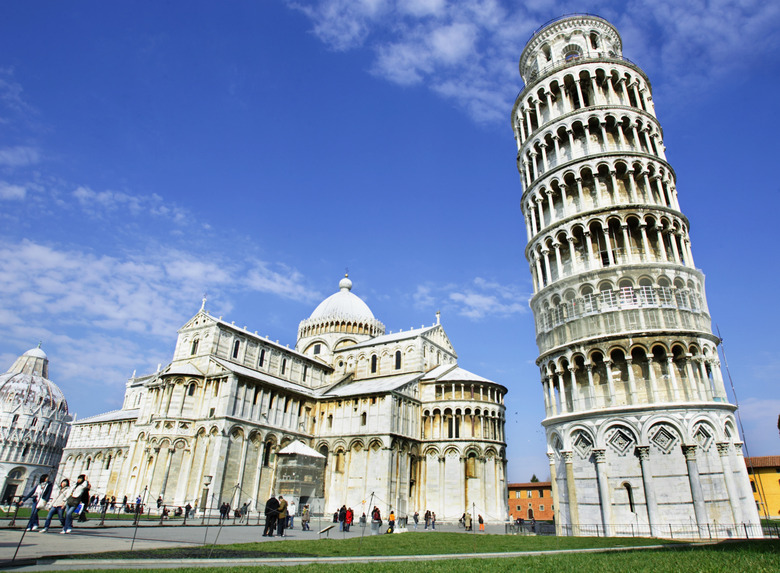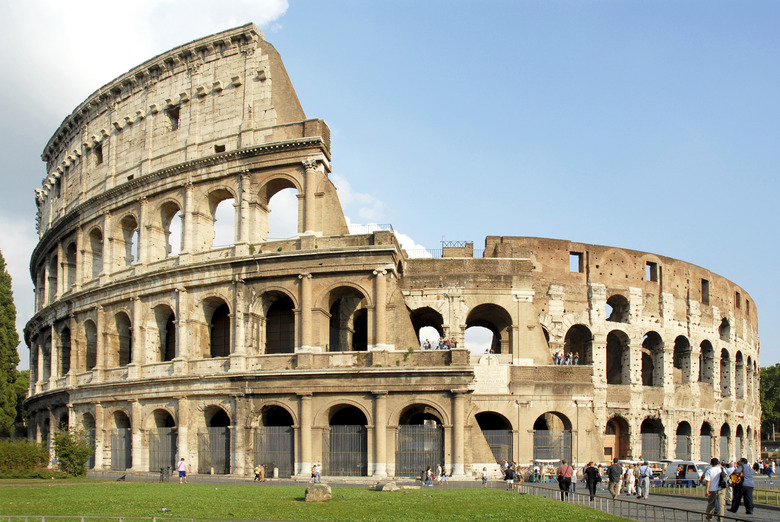Famous Buildings To Build For A School Project
We can often identify a city when we see its skyline. Various buildings stand out and are recognizable because of their familiar, distinctive architecture. The more unusual the outline, the more famous the building. Consider this and the complexity of the structure when you select a building to recreate for a school project.
Leaning Tower of Pisa
Leaning Tower of Pisa
The Leaning Tower of Pisa is a free-standing structure in Pisa, Italy, famous for the angle at which it sits. The construction of the tower spanned more than 200 years, first halting when the building began to tilt. As the structure gained weight, it began compacting clay in the ground. Construction restarted 100 years later but repeatedly paused for wars and battles. Architects found ways to keep it standing, and it maintains the now iconic tilt.
A lightweight tube, such as an oatmeal container or empty paper towel roll, can represent the structure. Cut the bottom at an angle and anchor it to a cardboard base.
Empire State Building
Empire State Building
The Empire State Building in New York City is the ninth tallest building in the world. With 102 stories, it was the first building to exceed 100 floors. The structure appears in numerous movies, including "Elf" and "King Kong." The rod at the top of the building gives the structure its distinctive character and extra height.
The simple, but recognizable, architecture can be copied with practical supplies. Use a solid and broad foundation to maintain the free-standing style of the structure. Popsicle sticks glued together, Legos or clay are some materials that will hold their shape while supporting a taller structure.
Roman Colosseum
Roman Colosseum
The Colosseum in Rome was an amphitheater where gladiators fought each other and wild animals to the death. The history of this round structure begins in 70 A.D. One third of the original structure remains today, surviving years of wear, a lightning fire and several earthquakes. Restoration has upheld the rest of the building.
The amphitheater has no ceiling and tiered seating. These details make the project more complex, as you will need to recreate the inside and outside. Create the layers and exterior design with materials that are easy to cut and shape, such as construction paper or clay.
The Sydney Opera House
The Sydney Opera House
A great deal of thought went into the construction of the Sydney Opera House in Australia. The unique architecture of this building makes it a recognizable silhouette around the world. With its many unusual angles, the building is a challenge project to recreate.
The sails that made the structure famous required four years of contemplation to design. Other features that draw attention are the tile work of the roof and glass walls that look out onto the harbor. Manipulative supplies, such as art clay or tinfoil, work best to form the rounded shapes.
Cite This Article
MLA
Sullivan, Annie. "Famous Buildings To Build For A School Project" sciencing.com, https://www.sciencing.com/famous-buildings-build-school-project-7890444/. 24 April 2017.
APA
Sullivan, Annie. (2017, April 24). Famous Buildings To Build For A School Project. sciencing.com. Retrieved from https://www.sciencing.com/famous-buildings-build-school-project-7890444/
Chicago
Sullivan, Annie. Famous Buildings To Build For A School Project last modified March 24, 2022. https://www.sciencing.com/famous-buildings-build-school-project-7890444/




